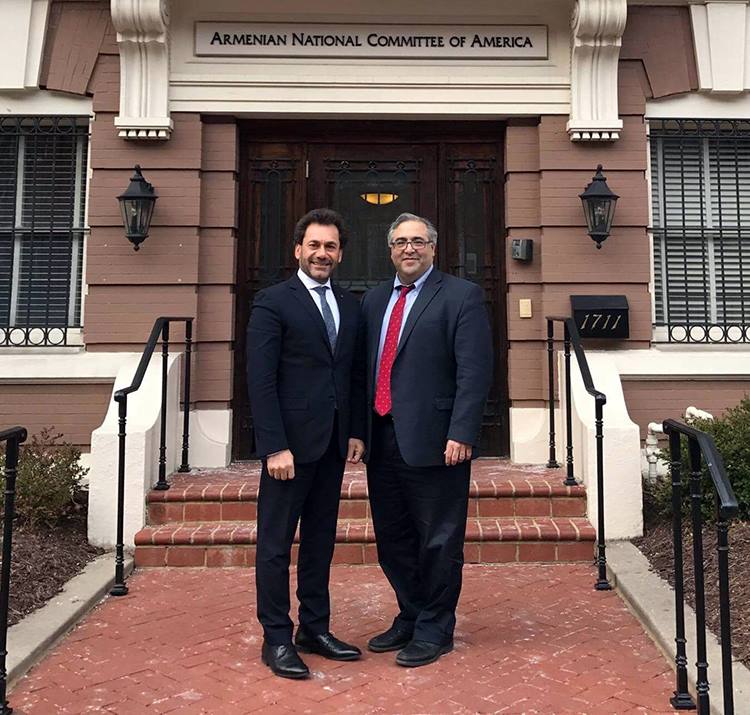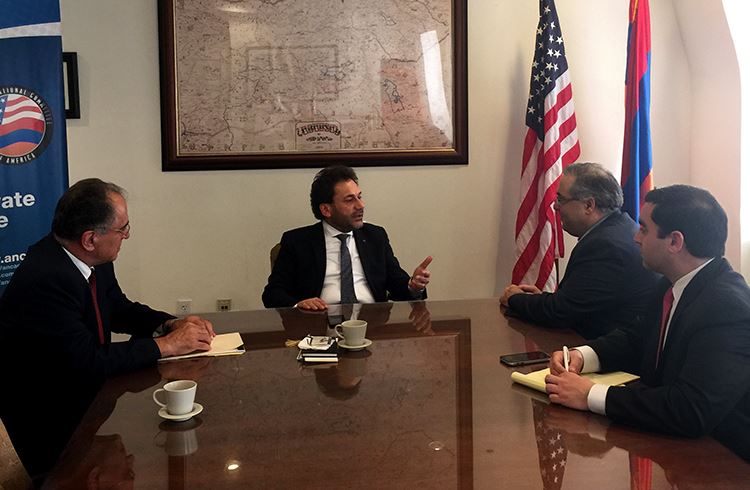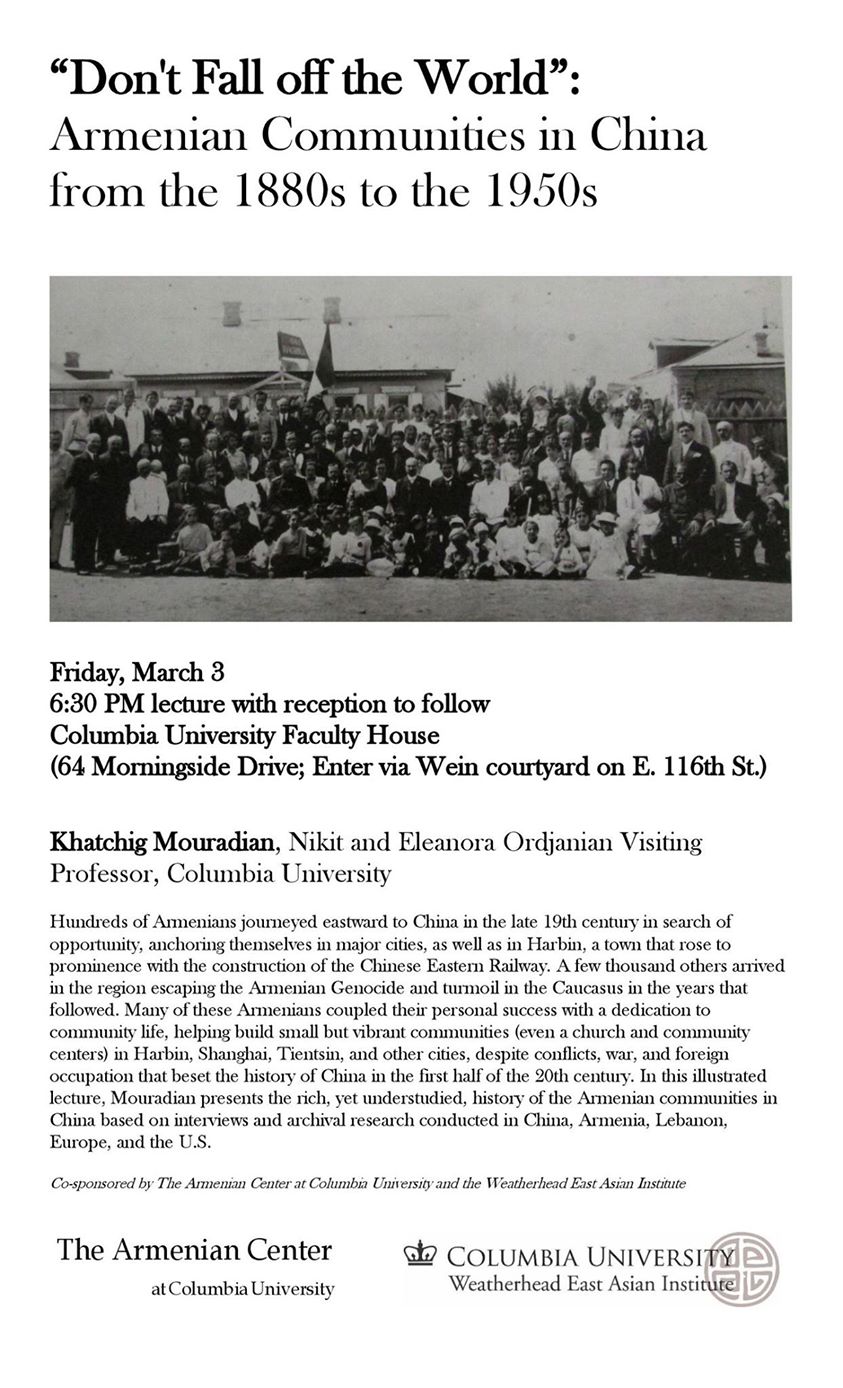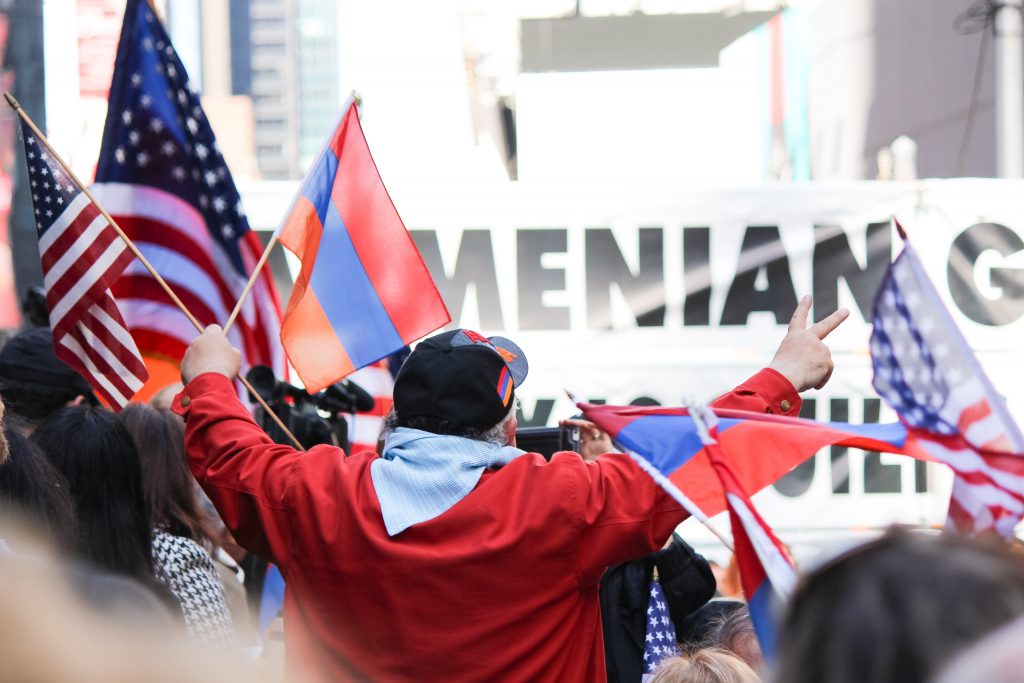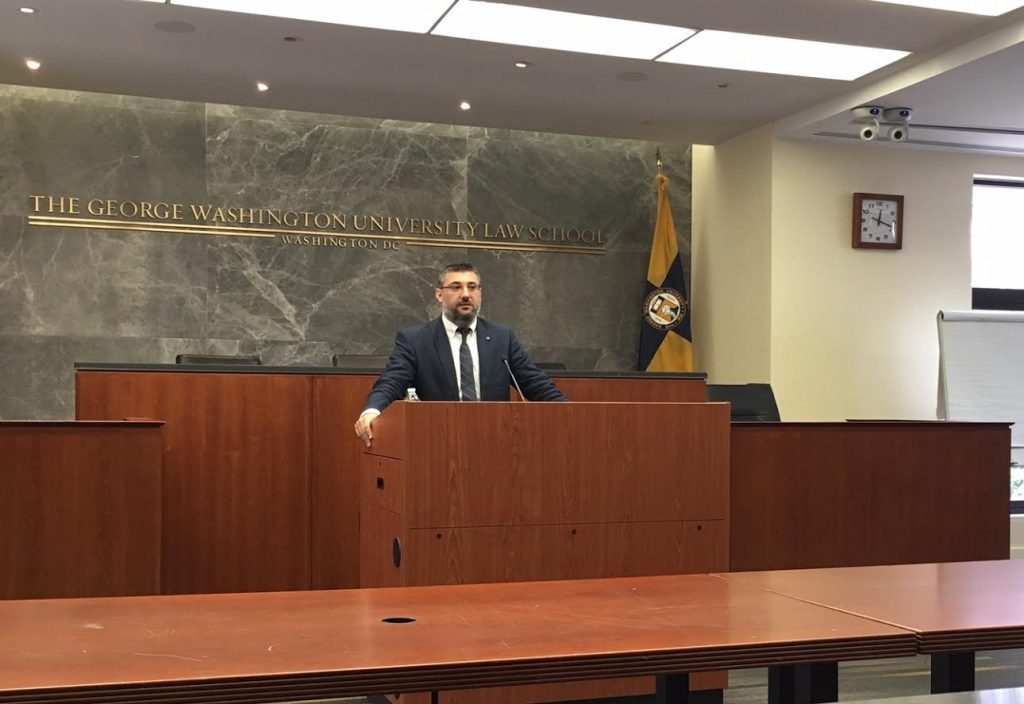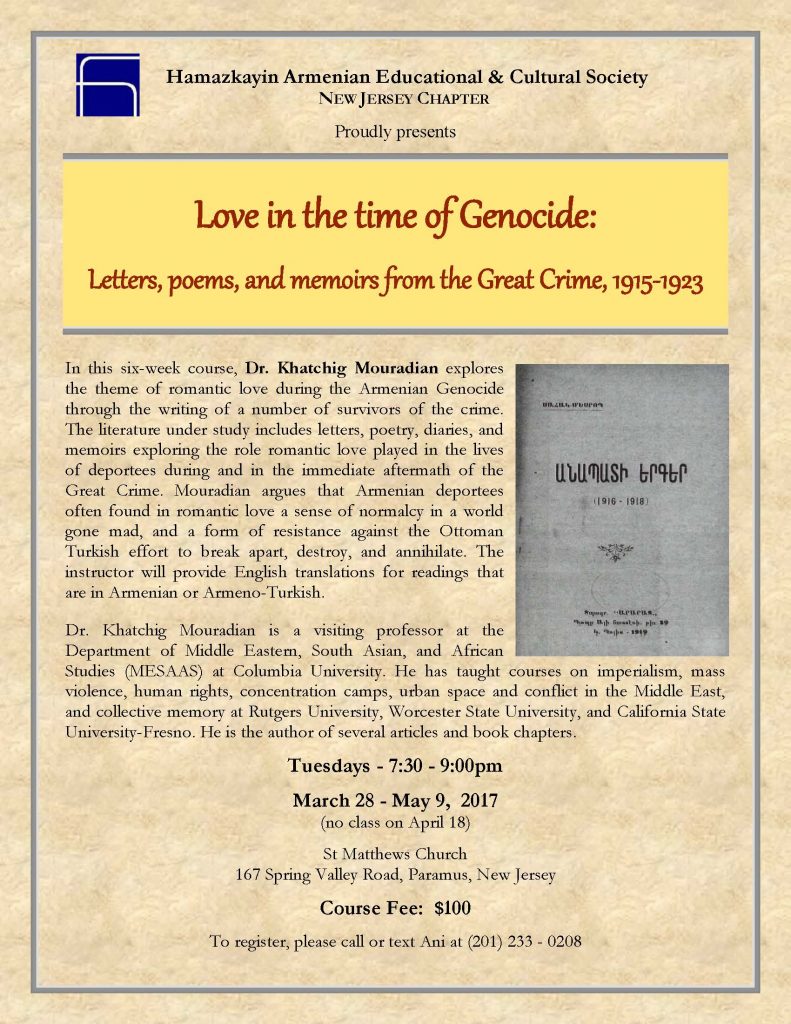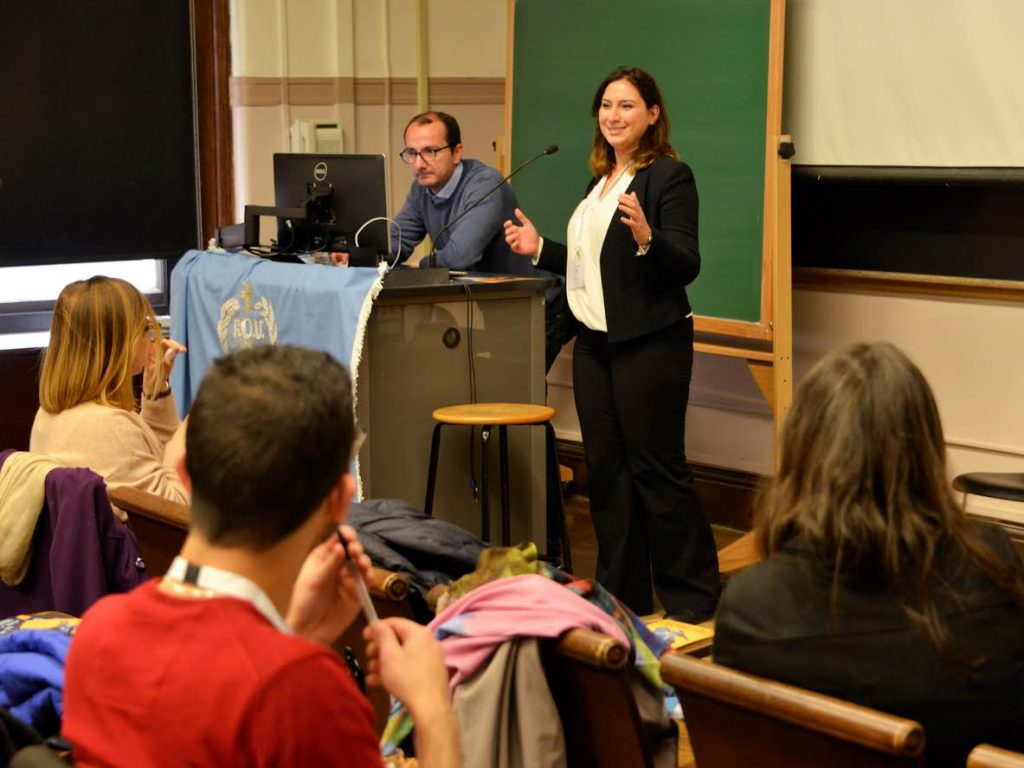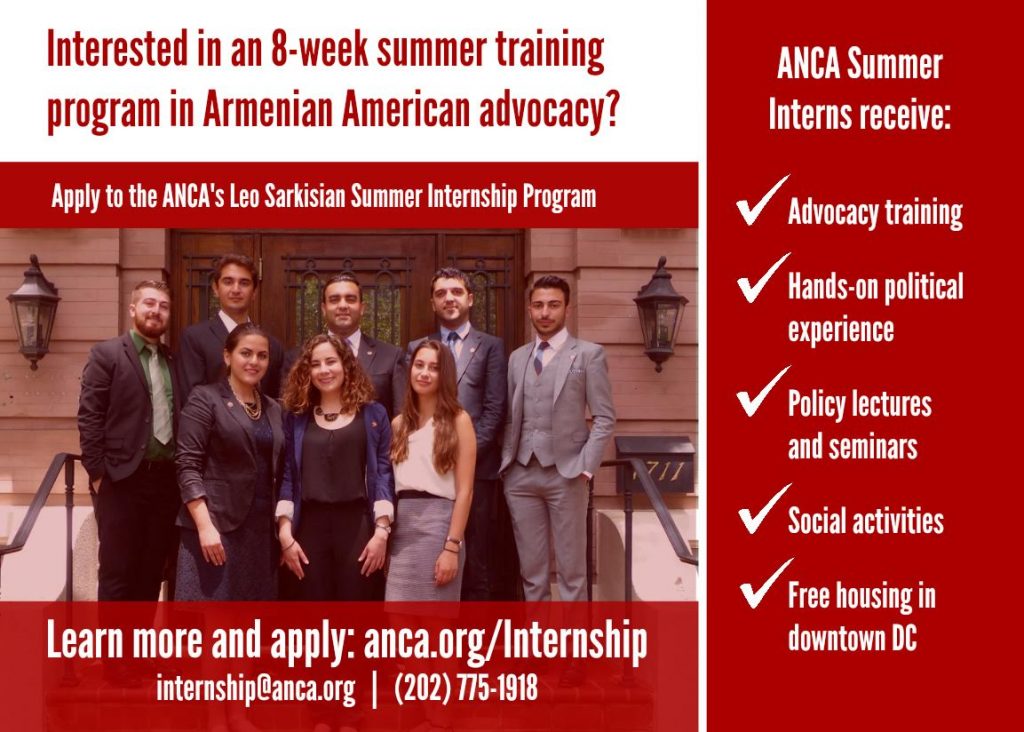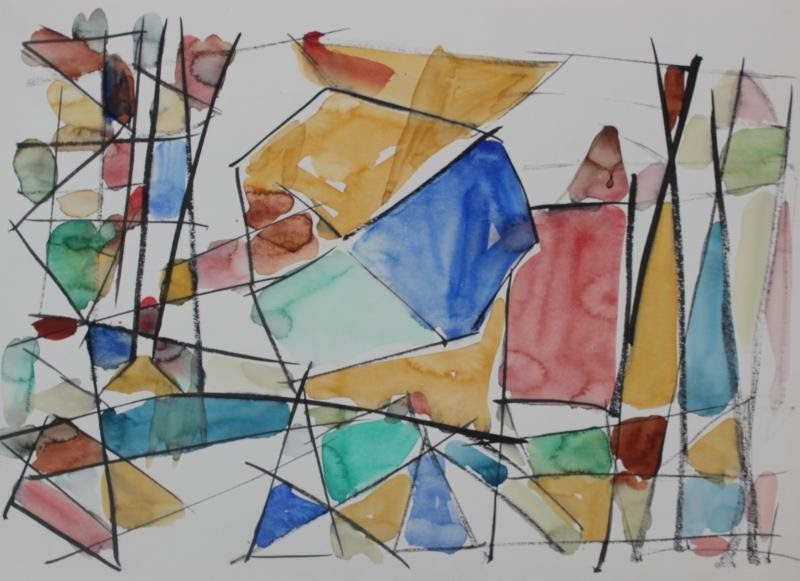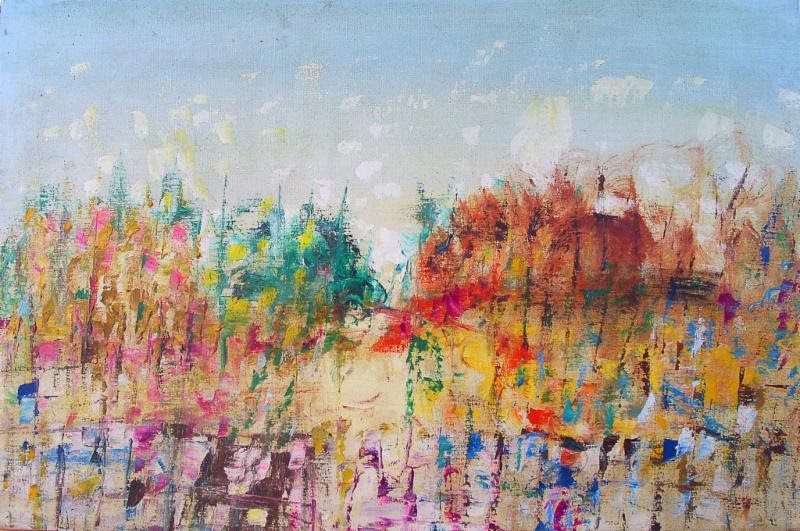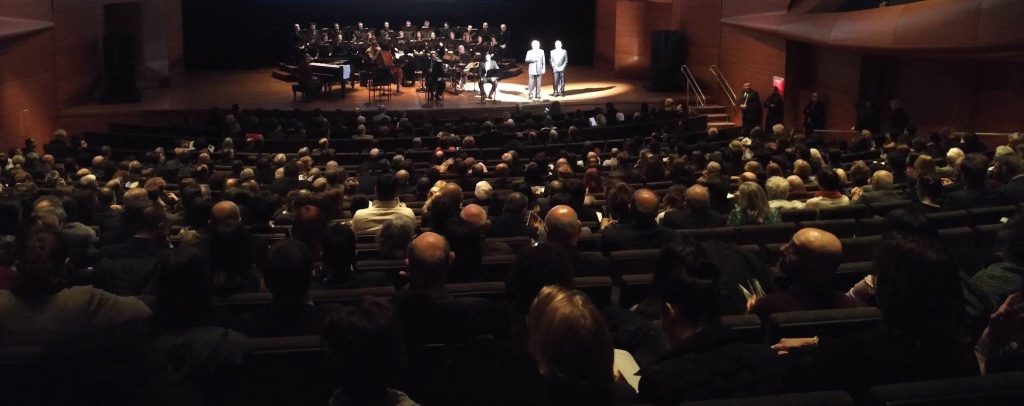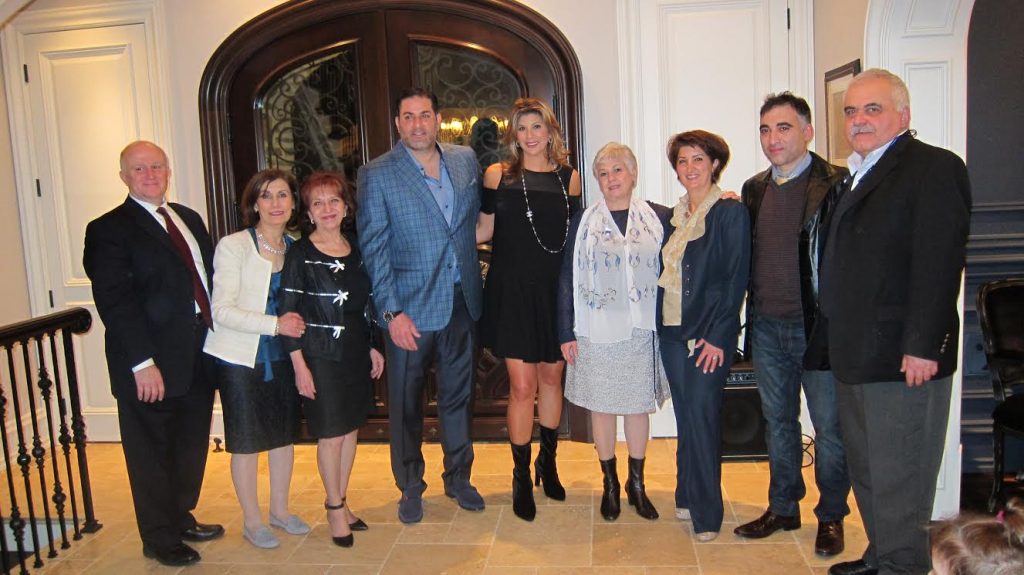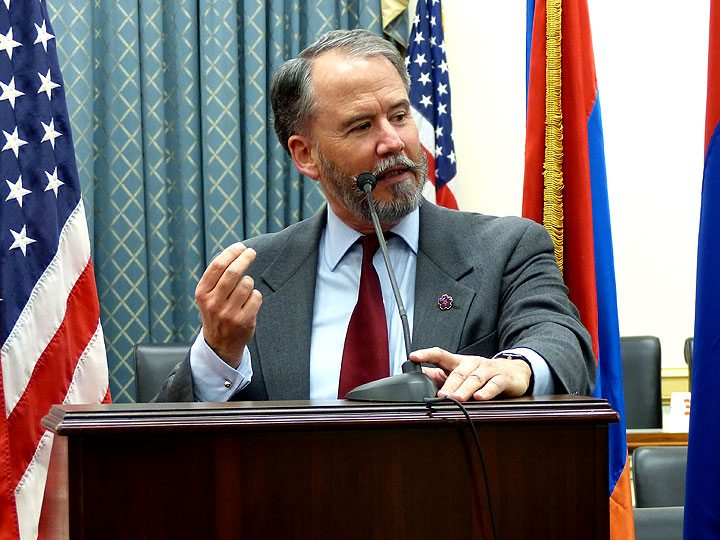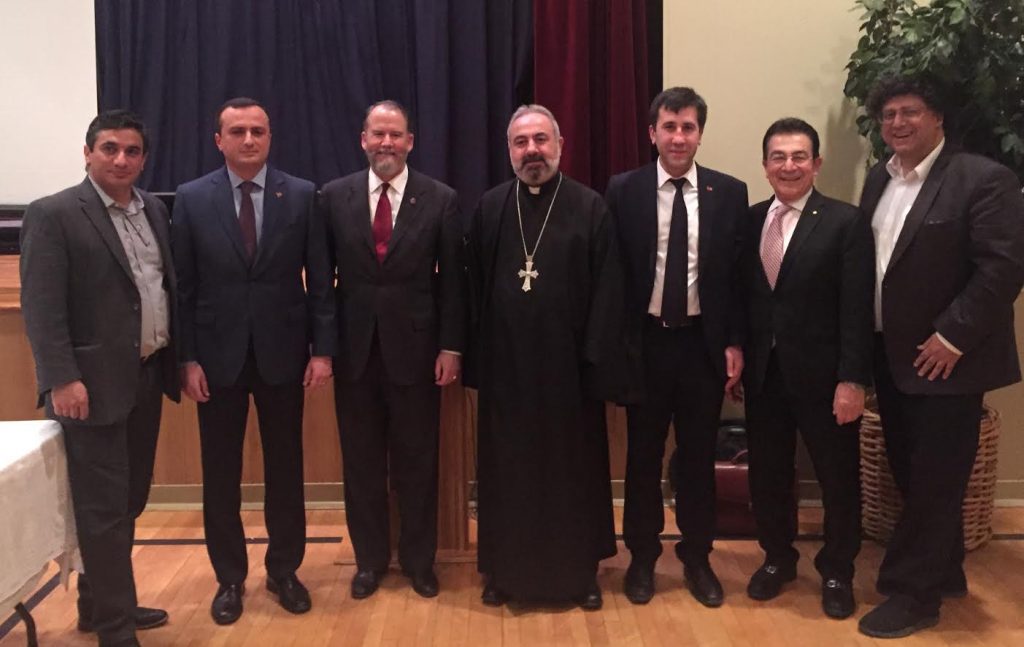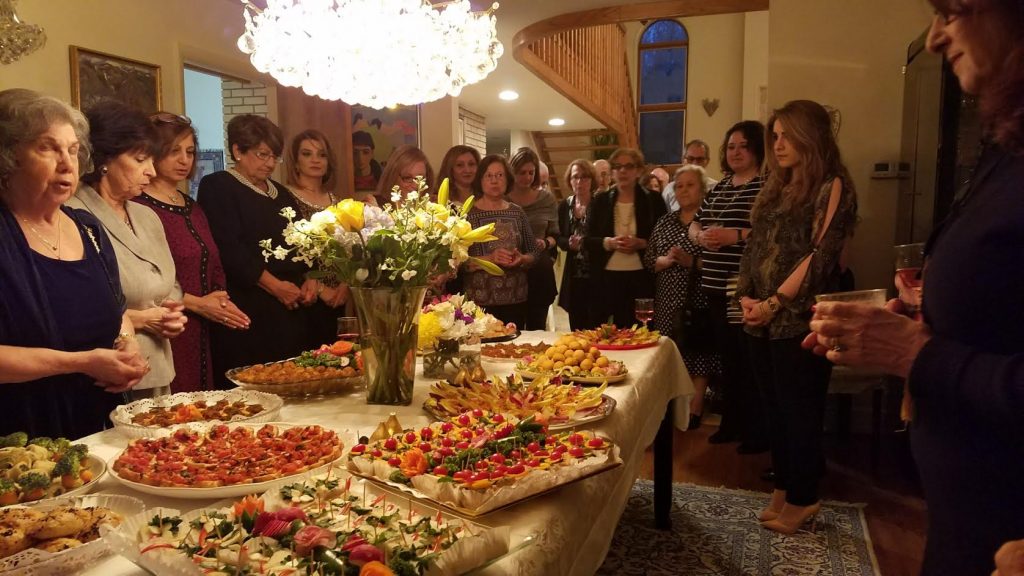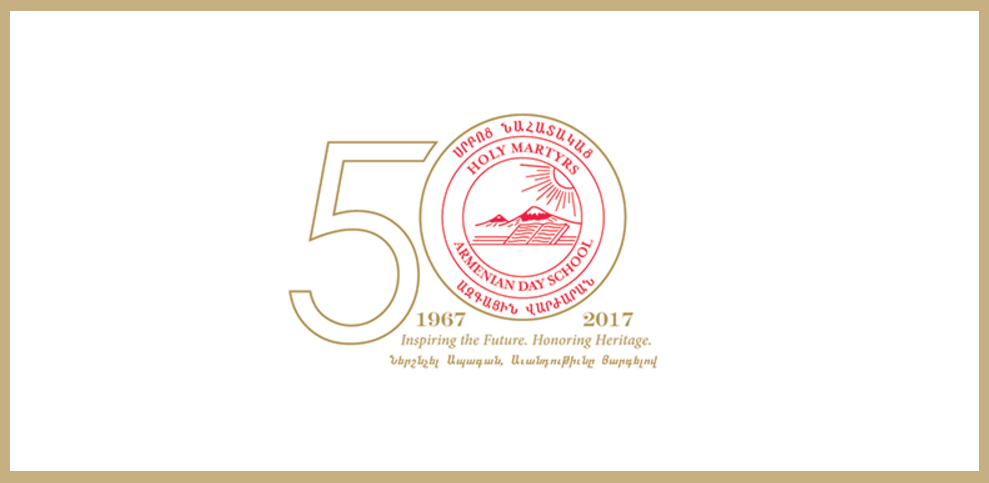RIDGEFIELD, N.J. (A.W.)— On March 17, the Armenian Revolutionary Federation (ARF) New Jersey “Dro” committee and the Armenian Democratic Liberal (ADL) Party of New York-New Jersey hosted an panel discussion entitled “The Four Day War and its Aftermath.”
![]()
(L to R) ARF New Jersey chairman Hakob Melkonyan; NKR Permanent Representative Robert Avetisyan; former U.S. Ambassador John Evans; Rev. Fr. Hovnan Bozoian; NKR Ombudsman Ruben Melikyan; ADL New York/New Jersey chairman Norair Meguerditchian; Tufenkian Foundation Trustee Antranig Kasbarian.
The panel, which was held at the St. Vartanants Armenian Apostolic Church hall, presented perspectives on Artsakh’s security, diplomacy, and peaceful negotiations, and was attended by over 200 community members.
The panel featured Artsakh Ombudsman (Human Rights Defender) Ruben Melikyan, former U.S. Ambassador to Armenia John Evans, ARF Eastern U.S. Central Committee member and Tufenkian Foundation Trustee Antranig Kasbarian, and the Permanent Representative of the Artsakh Republic to the U.S. and Canada Robert Avetisyan. The panel was moderated by Vartan Abdo, the director of Armenian Radio Hour of N.J.
“Tonight’s event is more timely than ever. Not only are we approaching the one year anniversary to the April War, but in recent weeks, we have seen renewed hostilities once again, leading us to ask many questions about Artsakh, its viability, security, and the ongoing negotiations,” community leader James Sahagian said in his welcoming remarks. “We can’t think about a better panel of experts, who together represent a broad resume of experience in dealing with Artsakh,” Sahagian added, before inviting moderator Vartan Abdo to the stage. Before introducing the panelists, Abdo commended the two political parties—the ARF and the ADL—for coming together and organizing the important event.
The first panelist, Ombudsman Ruben Melikyan, explained that his work—unlike the work of other Human Rights Defenders—also concentrates on the events of the 2016 April War as a major human rights issue. He mentioned that after a recently conducted poll, the number one concern of the people of Artsakh was security.
Melikyan presented his report about the April War, which covered war crimes against civilians and Artsakh Defense Army servicemen, and the notion of Armenophobia, which he described “as a policy pushed very hotly in Azerbaijan.”
Melikyan gave the example of Ramil Safarov, an officer of the Azerbaijani Army who was convicted of the 2004 axe-murder of Armenian Army Lieutenant Gurgen Margaryan during a NATO-sponsored training seminar in Budapest. According to Melikyan, Safarov is viewed as a hero in Azerbaijan, which is a clear example of Armenophobia.
Melikyan went on to describe the process of publishing his report, which included interviews, expert consultations, and the monitoring of open sources. Melikyan then provided examples of torture, executions, and mutilation and provided details about the locations where the incidents occurred. “The murders seemed to be executions. [They are killed] merely for being Armenian,” explained Melikyan.
Former U.S. Ambassador to Armenia John Evans described the events of April 2016 as being in clear violation of the rules of war and said that they even had genocidal intent.He explained how the Artsakh conflict has led to 25,000-30,000 deaths and said that casualties continue to happen even though a ceasefire was initiated in 1994.
“Clearly, Azeris—despite the fact they’ve been participating in Minsk Group talks—have not given up the idea that they can take Artsakh by force,” said Evans. “And one has the clear impression that they don’t care about the people, but only [about] the mountains and the land.”
Evans stated that Melikyan’s work helps improve Artsakh’s reputation. Evans discussed how the characteristics of a state are essential for governments like Artsakh to prove their statehood and that authorities there have already done a great deal of work in this regard.
“Right now, it seems to be that the number one task is to defense Artsakh. That means to defend it not with words or public relations, but with hard power,” said Evans.
“Karabagh, more than anything, is viewed as a prize—an apple for the leadership of Azerbaijan,” said ARF Central Committee member and Tufenkian Foundation Trustee Antranig Kasbarian. “For Armenians, especially those who live in Artsakh, Artsakh is their hearth, their home, their everything,” Kasbarian added.
Kasbarian discussed the work of the Organization for Security and Cooperation in Europe (OSCE) Minsk Group and how it has led to a “slow-motion” and “frozen” conflict. He also mentioned Russia’s role in the region and how it consistently uses the current situation as a lever.
“Something is beginning to change and we saw it in the April War,” said Kasbarian. “Azerbaijan has stepped it up. They have stepped up the military aspect and have re-armed themselves—many times over—with all the revenue they’ve gotten from oil.”
Kasbarian then explained that Azerbaijan has also shifted its rhetoric from anti-Armenianism and nationalism to racism and Armenophobia.
“Over time, it will be difficult for Azerbaijan to maintain this level of preparedness, animosity, and hatred towards the Armenians,” said Kasbarian. “It’ll be hard to retake Karabagh without instilling hatred in their people.”
After discussing the advantages and disadvantages during the April War, Kasbarian explained that the diaspora must proactively invest in Karabagh, especially in its infrastructure and resettlement projects. He stressed the significance of the liberated territories like Lachin and Kelbajar, since they unite Armenia and Karabagh. “Without those territories, Karabagh becomes an island encircled around Azerbaijan,” said Kasbarian. “Resettlement in those areas [Lachin and Kelbajar] are our best way of guaranteeing that our lands will never be returned,” concluded Kasbarian.
The final speaker, the Permanent Representative of the Artsakh Republic to the U.S. and Canada Robert Avetisyan, also spoke about the anti-Armenian sentiments of Azerbaijani authorities. He agreed with Kasbarian regarding the use of war to bring the people of Azerbaijan together against Armenians at a time when the country is they are suffering domestically.
Avetisyan explained that the lack of international condemnation is another vital issue that needs to be addressed. During his remarks, Avetisyan also presented Artsakh’s main concerns in the conflict, including the uncontrolled sale of arms. “We are against any offensive arms sales which are done without any international control,” Avetisyan said. He then underlined that consistent efforts towards resuming negotiations are essential and must take place with the participation of Artsakh.
The presentation followed with a question and answer perio, which mainly focused on the role of the Armenian Diaspora in helping solve the Artsakh conflict.




